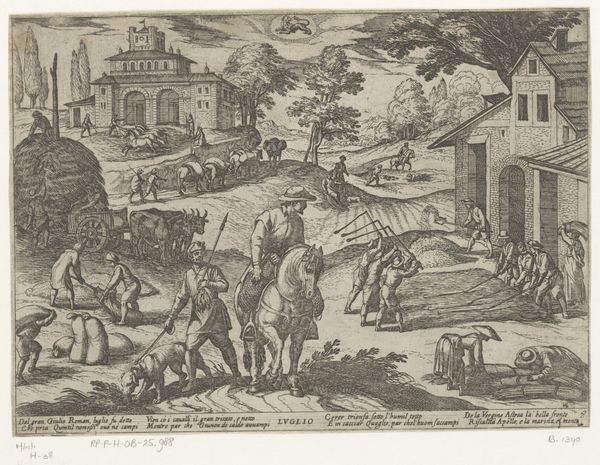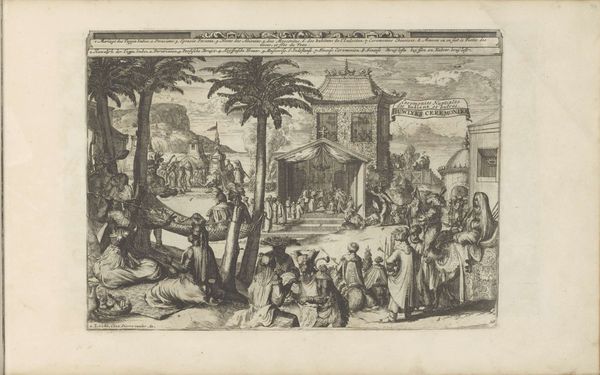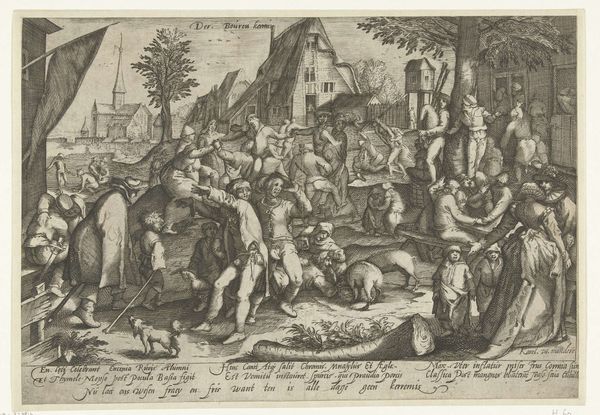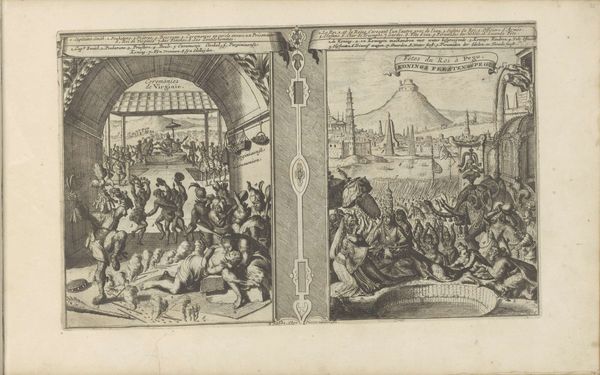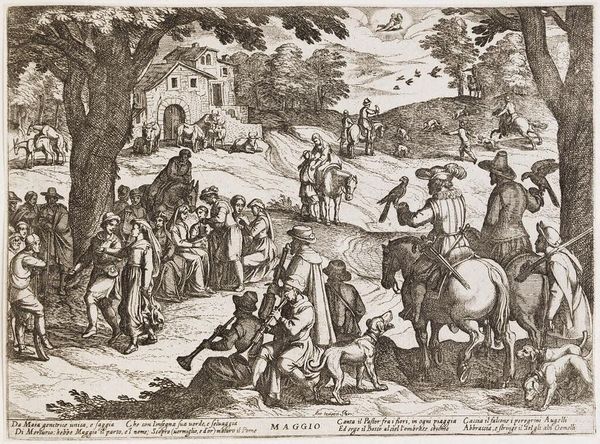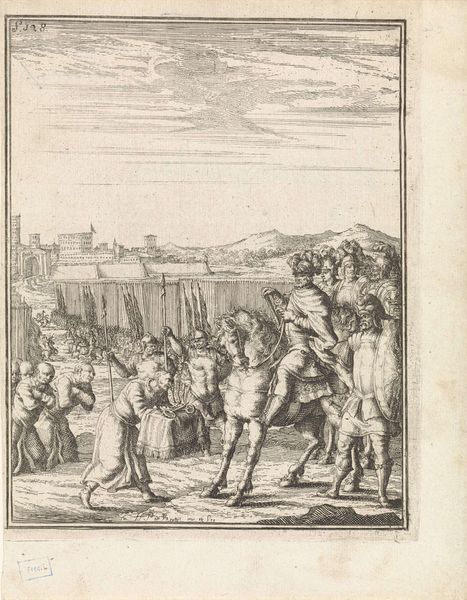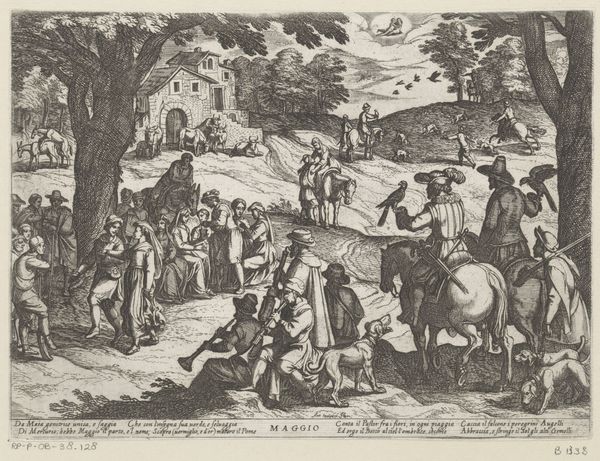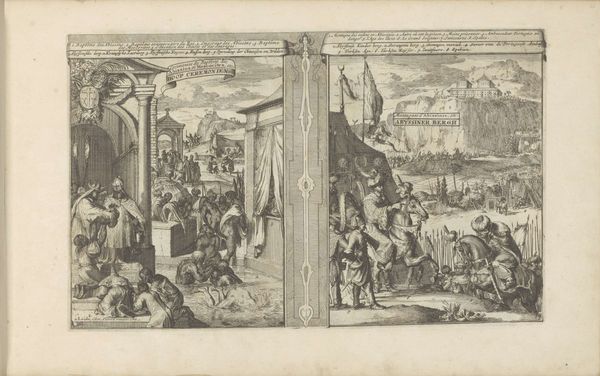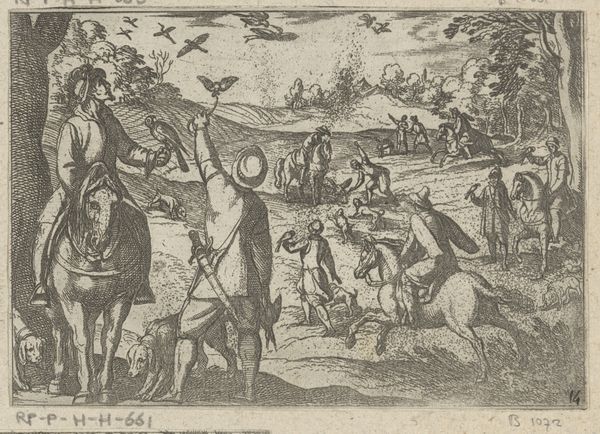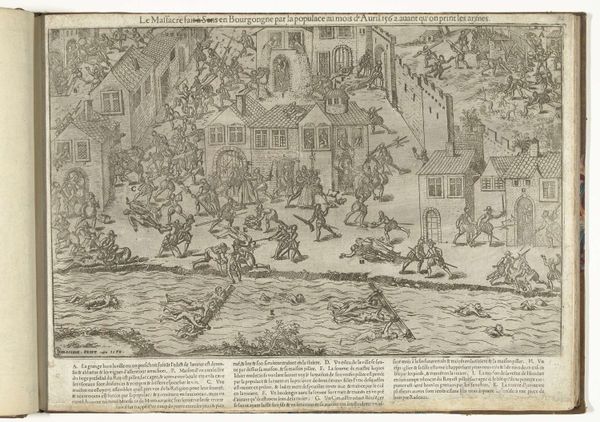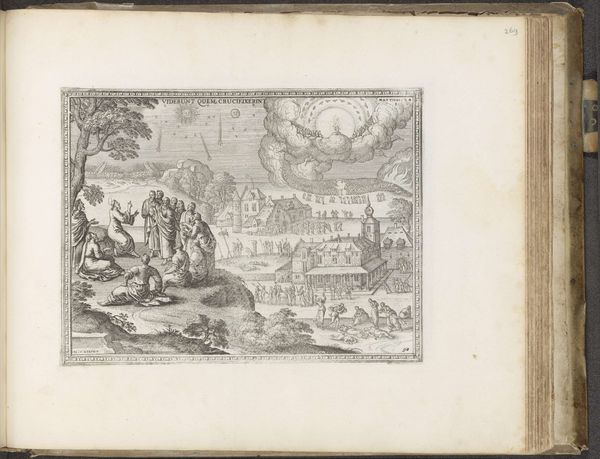
print, engraving
#
baroque
# print
#
old engraving style
#
islamic-art
#
history-painting
#
engraving
Dimensions: height 217 mm, width 300 mm
Copyright: Rijks Museum: Open Domain
Editor: This is "Slavernij en gevangenschap in het Ottomaanse Rijk," or "Slavery and Captivity in the Ottoman Empire," a print made between 1682 and 1733 by Romeyn de Hooghe. It depicts what seems like a bustling scene of captives being processed near the sea. It’s… unsettling, to say the least. What’s your take on it? Curator: Unsettling is the perfect word! De Hooghe, bless his observant heart, really captures the *texture* of power here, doesn't he? It’s all brisk lines and stark contrasts, a world rendered in moral black and white through the visual vocabulary of the Baroque. The figures, rendered with such fine detail, are caught in a theatrical tableau – observe the indifference in the faces of the captors versus the visible anguish of the enslaved. Do you think the artist tried to hint at something beyond the straightforward depiction of slavery? Editor: It definitely feels like more than just a historical record. There’s almost a critical… edge to it? Maybe he’s subtly critiquing the whole system? Curator: Exactly! He wasn’t just illustrating, he was interpreting, with all the biases of his time, of course. Consider the symbolism: the imposing tower, the ships implying journeys to come, the carefully rendered costumes—every detail serves as commentary. And I think maybe what strikes me most about De Hooghe's work, beyond the historical and cultural context, is its lingering power to… disturb. Does it make you think differently about "history painting" after viewing it? Editor: Absolutely. It's a reminder that even in historical depictions, there are layers of interpretation and implicit bias. Curator: Precisely. It also makes us think more critically. That's something, at least.
Comments
No comments
Be the first to comment and join the conversation on the ultimate creative platform.
